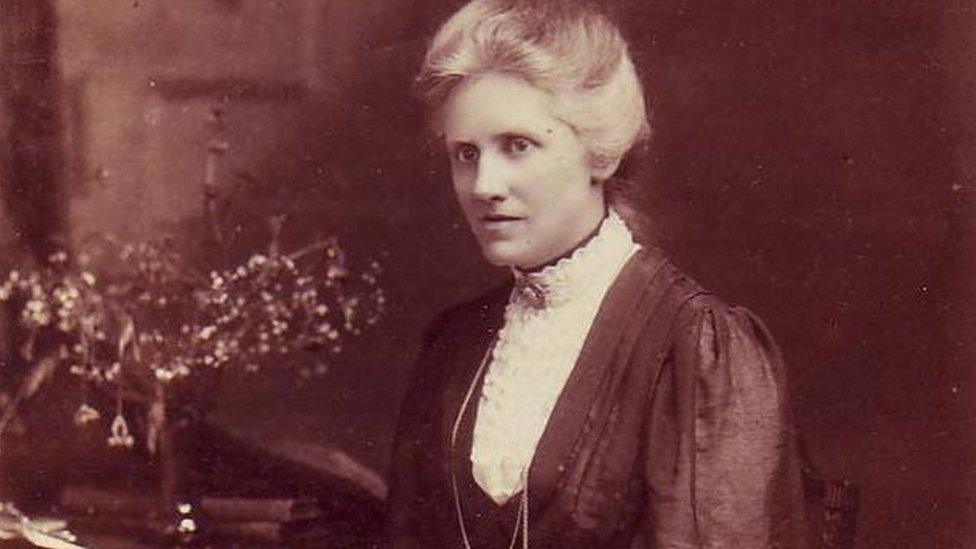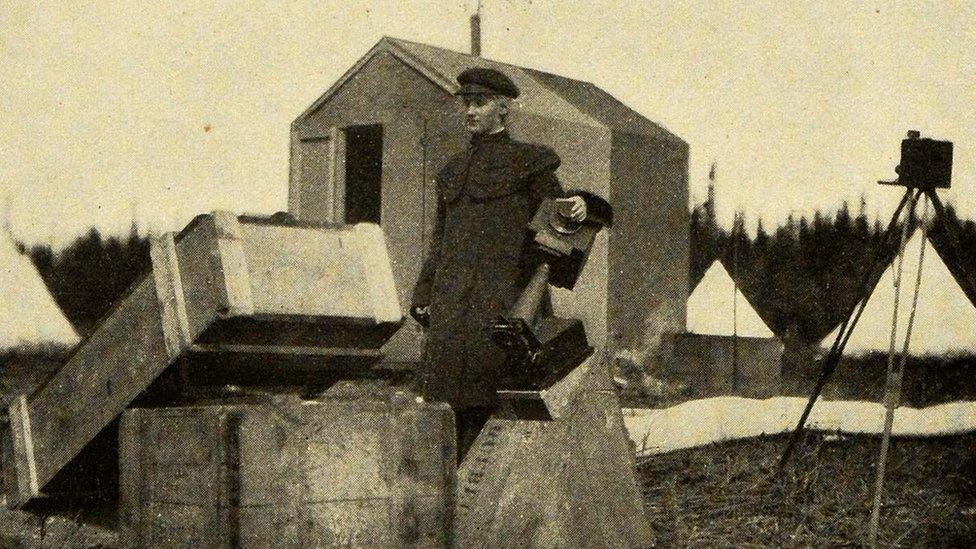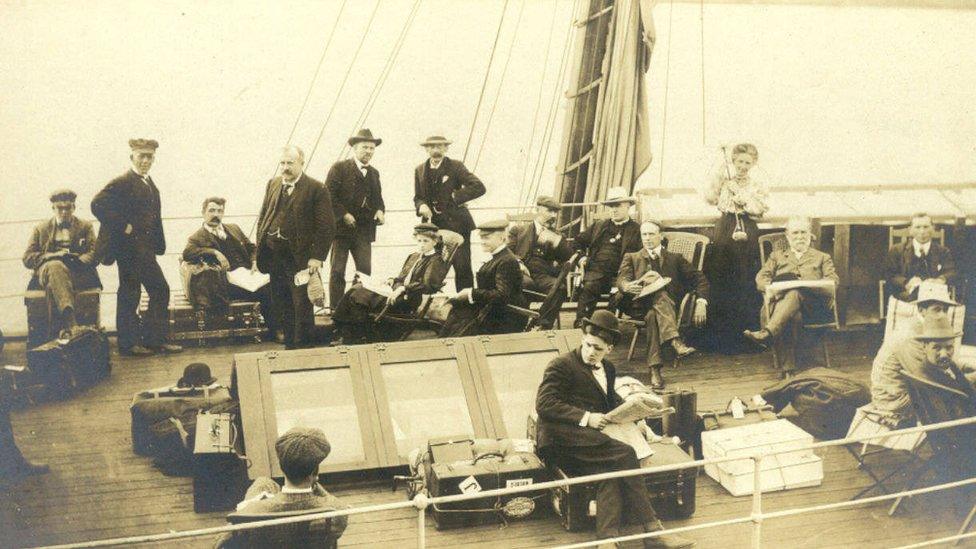Annie Maunder: Astronomer remembered on 150th birthday
- Published

Annie Maunder: A pioneer of solar astronomy
An astronomer described as the "woman forgotten by science" will be remembered by a series of events to mark the 150th anniversary of her birth.
Annie Maunder worked at the end of the 19th Century and a crater on the moon is named in her honour.
With her husband Edward, she recorded the dark spots that pepper the sun.
Her story will be told in her hometown of Strabane, County Tyrone as part of 150th anniversary celebrations.

More on Annie Maunder and other female pioneers of science:
Born in 1868 in Strabane, the daughter of a Reverend, Annie Scott Dill Russell won a scholarship to Girton College, Cambridge, and became one of the first female scientists to work at the Royal Observatory, Greenwich.
"Annie's ground-breaking achievements in the sphere of astronomy - particularly solar observation - were remarkable for the time, eventually securing her a place in the male-dominated Royal Astronomical Society," said a Derry City and Strabane District Council spokesperson.
A commemorative talk will take place in Strabane Library, developed in partnership with local schools and the Armagh Planetarium and Observatory.
A blue plaque is also to be erected in her honour in her hometown.

Annie Maunder on an eclipse expedition in Labrador, Newfoundland
During her lifetime Annie Maunder went on many scientific expeditions to observe eclipses, often as the only woman.
She even designed her own camera to take spectacular pictures of the Sun, including the first photograph ever of streamers from the Sun's outer layer, or corona.
In 1892, the names of Annie Russell, her maiden name, and fellow Greenwich astronomer Alice Everett were put forward to become fellows of the Royal Astronomical Society.
However, they failed to gain enough of the popular vote in a secret ballot and were rejected.
Mrs Maunder married Edward Walter Maunder in 1895.
Annie worked alongside her husband, taking photographs of the Sun, laying the groundwork for a modern understanding of solar activity.

On board ship: Annie and Walter Maunder can be seen sitting together
The conventions of the time meant that Annie's photographs were published under her husband's name and she could not speak at scientific meetings.
She was eventually made a fellow of the Royal Society in 1916, 24 years after first being proposed.
Annie Maunder died in 1947.
On the far side of the Moon lies the Maunder crater, named after Annie and her husband.